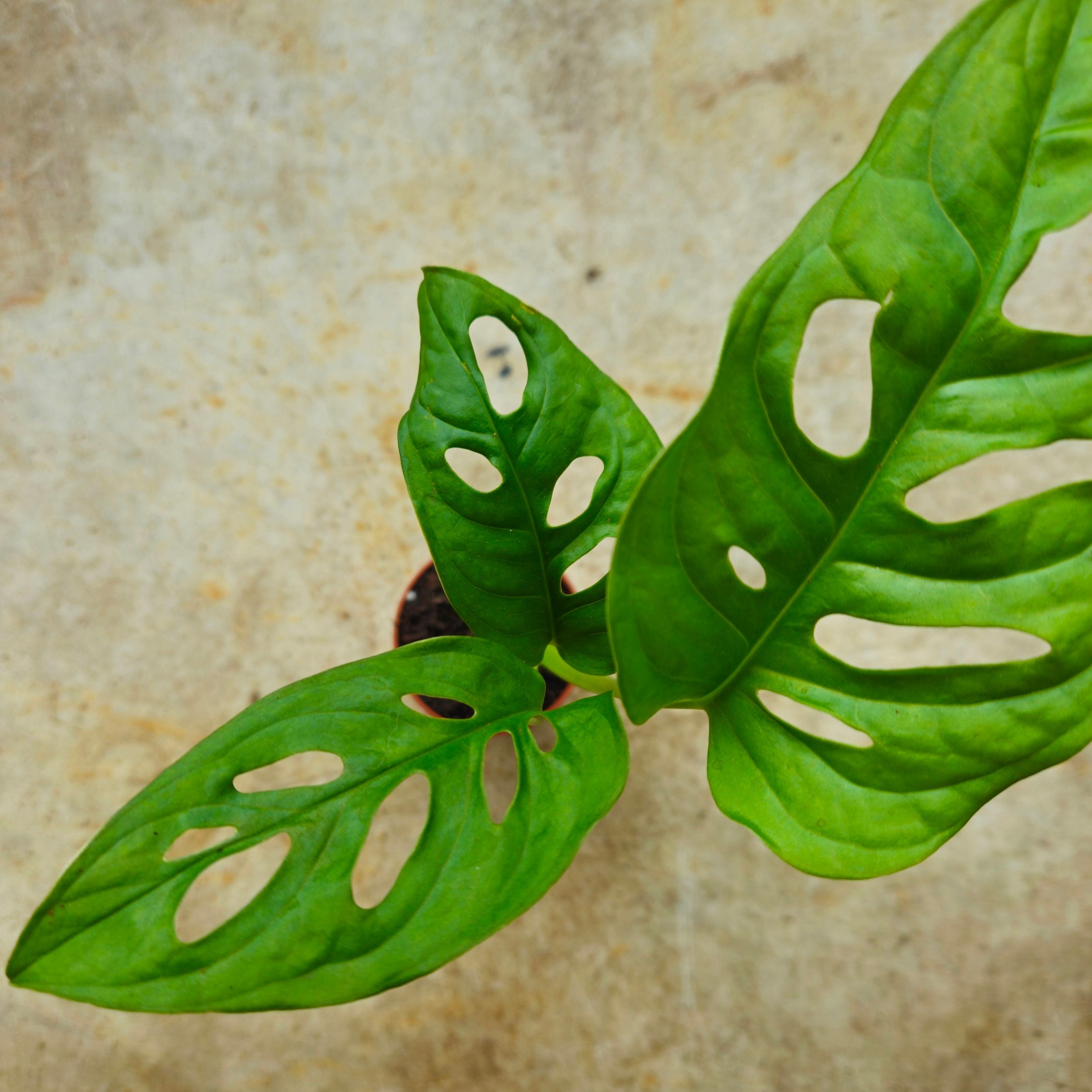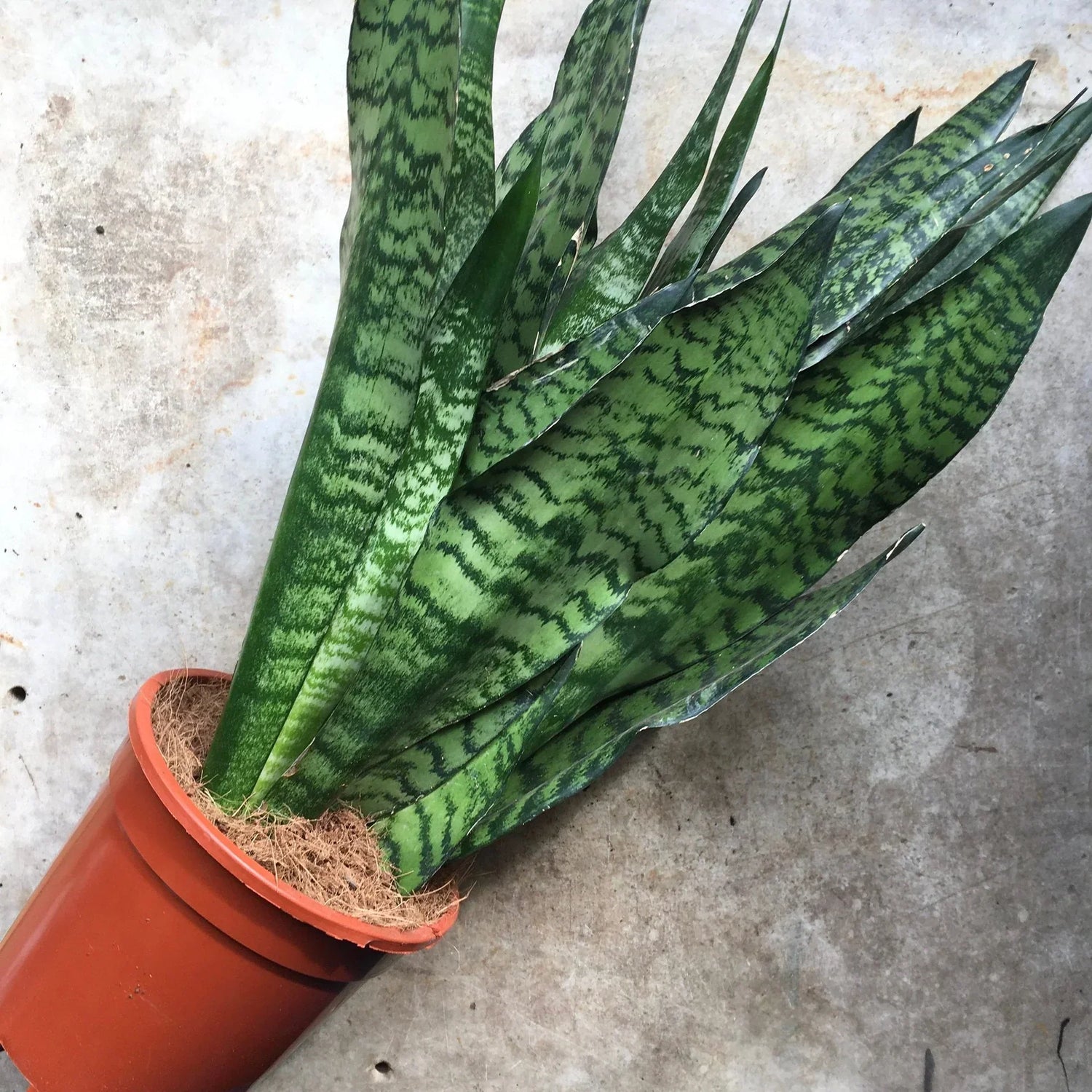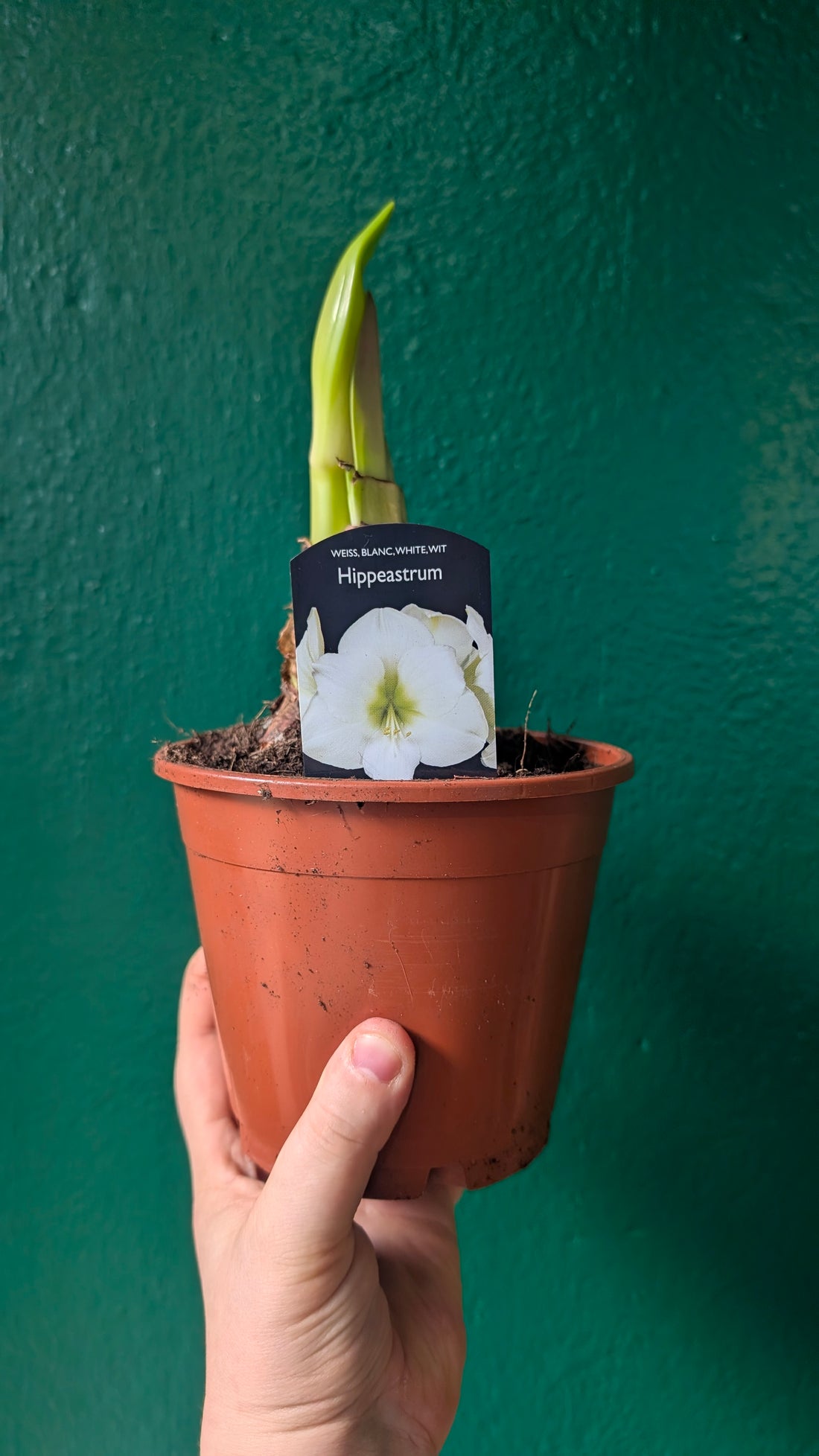Welcome to the wonderful world of Cheese Plant care! Monstera deliciosa, often referred to as the Swiss cheese Plant, is a stunning and popular houseplant known for its large, perforated leaves. In this comprehensive guide, we'll walk you through everything you need to know to keep your Monstera healthy and thriving.
Check out our full range of Monstera Houseplants from Between Two Thorns.

Cheese Plant Overview
Monstera deliciosa is native to Mexico and Central America (countries such as Panama, Guatemala and Costa Rica). In these countries, it grows in tropical rainforests, mid-mountainous regions and lowland areas. The Swiss cheese plant is a liana, (a vine-like plant) that can climb to a height of 20 meters.
The name monstera comes from the Latin for monstrous, referring to the large size that the plant can reach, especially in the wild. The species name, deliciosa, relates to the fruit that the Monstera can produce, which supposedly tastes like fruit salad, a mix of banana and pineapple. In Mexico, it is called the breadfruit, and in many Central American countries, it is considered a delicacy. Unfortunately, the plant rarely fruits as a houseplant in the Northern Hemisphere, unless kept in a greenhouse or conservatory.
It is generally thought that Monstera fenestrate (produce holes in their leaves) to allow the sunlight to pass through the upper foliage to reach the lower leaves. Young plants will have no fenestrations, but as they mature the fenestrations and splits will form providing the plant has enough light.
How to Look After a Monstera deliciosa (Swiss cheese plant)
-
Light: Cheese plants thrive in bright, indirect sunlight. Avoid direct sunlight as it can scorch their leaves. If your plant receives too little light, it may develop leggy growth with fewer leaves.
Immature cheese plants won’t develop fenestrations (holes) if they aren’t getting enough light.
-
Watering: Water your Monstera when the top two inches of soil feel dry. It's better to underwater your plant than overwater, as too much moisture can lead to root rot. Use a well-draining potting mix with chunky components (such as coarse bark) and ensure the pot has drainage holes. Reduce watering in winter.
Temperature and Humidity: Maintain a temperature between 18-27°C (65-80°F) and keep humidity levels high, ideally around 60% or more. Mist your plant regularly or place it near a humidifier to create the perfect environment.
-
Fertilizing: During the growing season (spring and summer), feed your Cheese Plant with a balanced liquid fertilizer, it is always advised to follow the instructions on your fertilizer. Reduce feeding in the dormant winter months.
How to Re-pot a Cheese Plant
Re-pot your Monstera when it becomes root-bound or outgrows its current pot, typically every 2 years. Choose a pot that's one size larger, provide fresh, well-draining soil, and gently transfer your plant, being careful not to damage the roots. Aerial roots can be pushed into the soil to help aid growth.
How to Propagate a Monstera Deliciosa
Propagating a Cheese Plant is an exciting way to grow new plants. Follow these steps:
-
Choose a Healthy Stem: Select a stem with a few leaves and nodes (small bumps on the stem where a leaf emerges).
-
Cut the Stem: Use a clean, sharp knife or scissors to cut just below a node. Ensure your cutting is at least 6 inches (15 cm) long. A section with an aerial root can be easier to propagate.
-
Rooting: Place the cutting in water or moist soil. Roots should develop within a few weeks.
-
Transplant: Once your cutting has well-established roots, transplant it into a pot with the appropriate soil mix.
Cheeseplants are a one of our favourites and we have a wide range of other bestselling houseplants available here.
How to Prune a Cheese Plant
Pruning your Monstera helps maintain its shape and encourages healthy growth. Trim yellow or brown leaves, as well as leggy stems. Make clean cuts just above a leaf node.
How to Take a Cutting from a Cheese Plant
Taking cuttings for propagation follows a similar process as mentioned earlier. Ensure you choose a healthy stem, make a clean cut, and follow the propagation steps.
How Often Should I Water a Cheese Plant
Watering frequency depends on various factors like humidity, temperature, and pot size. As a general rule, check the top two inches of soil and water when it's dry. Water less in winter and more frequently during the growing season.
Why Are My Cheese Plant Leaves Going Yellow/Brown/Curling?
-
Yellow Leaves: Yellowing leaves can result from overwatering, poor drainage, or too much direct sunlight. Adjust your watering and lighting conditions accordingly. If the leaves are wilting and yellowing it is most likely to be due to overwatering, check the roots for rot and re-pot if necessary.
-
Brown Leaves: Brown edges or spots may indicate low humidity, underwatering, or direct sunlight. Increase humidity and adjust your watering routine. Too much warmth, for example, if the plant is next to a radiator, can cause brown leaves that dry up and fall off.
-
Curling Leaves: Curling leaves can be a sign of underwatering, over-fertilization, or low humidity. Ensure proper watering and humidity levels.
How to Make a Swiss Cheese Plant Bushy
Encourage bushier growth by regularly pruning leggy stems and providing adequate support for your plant. A trellis or stake can help it grow more compactly. Ensure your Monstera has enough light, lack of light can cause this plant to become leggy.
Are Cheese Plants Poisonous to Cats and Dogs?
Yes, Monstera deliciosa is considered toxic to cats and dogs. It contains insoluble calcium oxalate crystals that can cause oral irritation, drooling, and digestive issues if ingested. Keep your Cheese Plant out of reach of pets or opt for pet-friendly houseplants.
With these expert tips, you're well-equipped to care for your Monstera deliciosa and enjoy its lush, tropical beauty in your home. Happy Cheese Plant growing!































































